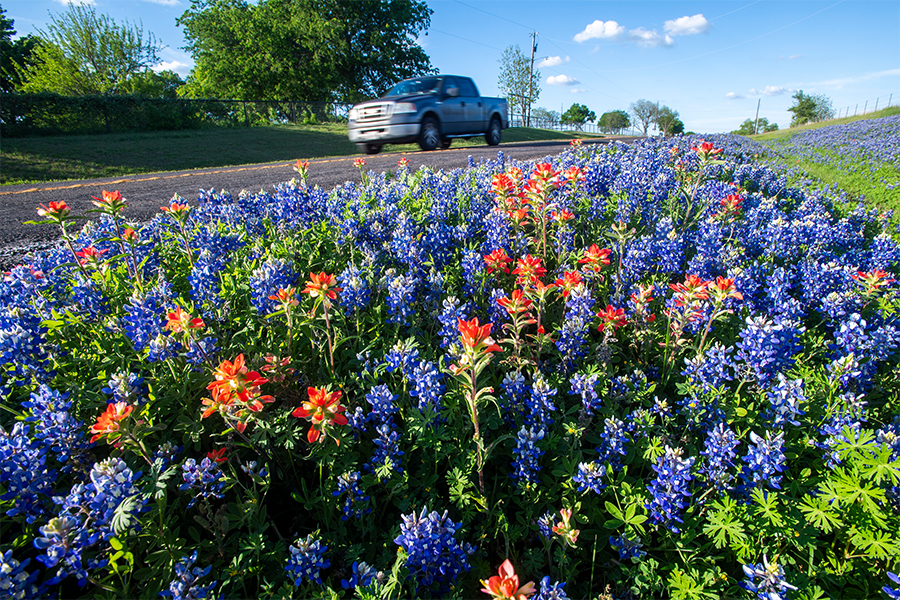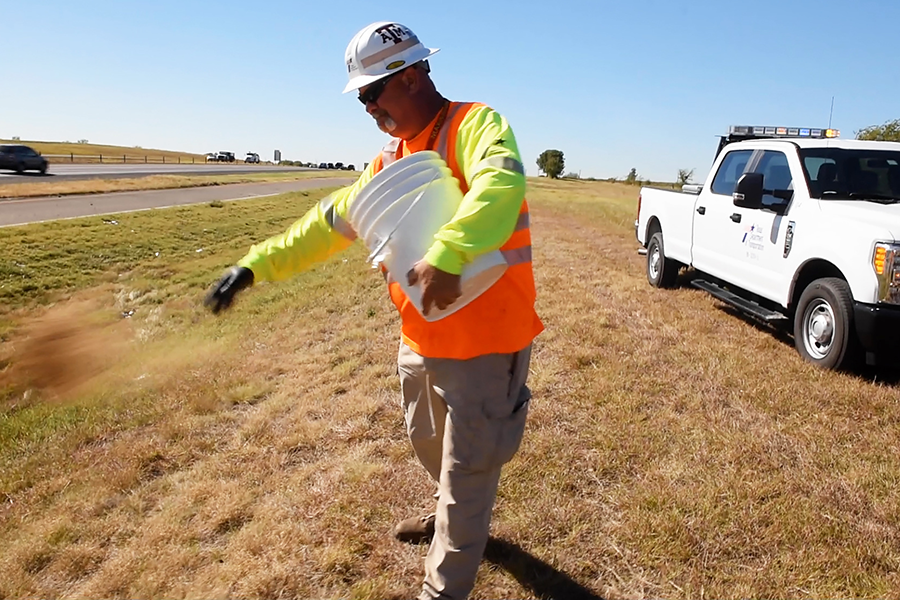Planting Bluebonnets
Planting Bluebonnets and other native wildflowers
Growing Conditions
Bluebonnets grow best in soils that are alkaline, moderate in fertility, and, most important of all, well drained. Full sun is also required for best growth. Seed may be planted September 1 through December 15 of each year. For best results, plant seeds no later than mid-November.
This allows seed time to germinate and grow throughout the winter months, during which time a heavy root system and a sturdy plant is developed to produce an abundance of spring flowers.
Seeds
Bluebonnets produce large, hard-coated seeds that may cause them to have a low germination rate the first year or two. As the hard seed coats wear down by rain, abrasion, and decay, the seedlings begin to sprout.
Sowing seeds
Soil preparation is not necessary because the seed can be broadcast over undisturbed soil. However, seed to soil contact is essential. When sowing seed in turf areas, make sure to scalp the grass as low as possible with a mower and rake up any thatch which may prevent the seed from contacting the soil.
Small areas can be sown by hand or with a mechanical hand device. Large areas require a seed drill or other mechanical means that can be calibrated for the seeding rate. For small areas, or places where you want a good display more quickly, seed companies recommend using eight to 10 seeds per square foot. At that rate an ounce will cover approximately 135 square feet, and 1/2 a pound covers 1,000 square feet. An acre will require 20-30 pounds of seeds.
Seed preparation
Do not soak bluebonnet seed or prick it with pins or in any way disturb the seed coat. Although these methods can speed up germination, they can also damage the seed.

Soil
After seeding, it is best to cover the seed with soil no more than one-quarter inch deep. This protects the seed from being eaten by birds or "baked" by the sun. Water thoroughly but gently. Follow the first watering with additional light waterings every three days for about three weeks if rain is not present.
Fertilizer
Fertilizing is not recommended as it will produce more leaves but not more blooms. Some seed will begin to sprout in four to 10 days. The germination process can continue over 18 months or more.
Soil bacterium
Be aware that one of the reasons bluebonnets fail to bloom is the lack of an essential bacterium in the soil. These bacterium, known as rhizobium, form nodules on the roots of the bluebonnet plant and are able to fix atmospheric nitrogen which is the conversion of atmospheric nitrogen to a form usable by plants. This nitrogen fixation is needed for the bluebonnets to bloom.
Flowering season
In general, the first flowers open about March 15 in the southern part of the state, and in the more northern part of the state, first flowers may not show before May 1. The length of the flowering period is about a month. Allow two weeks after the full bloom period has passed for the seeds to mature. View specific data for your area on the regional seed list.
Mowing
As a rule of thumb, when the dead brown foliage offsets the floral color display, the area can be mowed. If it is a large area, it should be mowed to a height of four to six inches. Annual mowing aids in seed dispersal and reduces competition of unwanted weeds and grasses.

Seed storage
If you wish to store the seed, the pods should be harvested before they explode and scatter the seed. The seed should be thoroughly air dried on newspaper. Seeds which are not completely dry prior to storage will contain excessive moisture which will cause mold to grow and damage the seed.
After the seeds are completely dry, store in a water-resistant container. Add a packet of desiccant, which can be found in craft stores, to the seed. This gel will remove any moisture that remains in the storage container after it is sealed. Seed stored under these conditions will remain viable for many years. Seed may be sown at harvest or stored for future planting in the produce section of the refrigerator until the fall.
Most important factors
In brief, it may be said that the most important factors in establishing Bluebonnets are: plant prior to December 15 of every year, plant seed in soil well adapted for Bluebonnets, and make sure there is good seed to soil contact when planting.